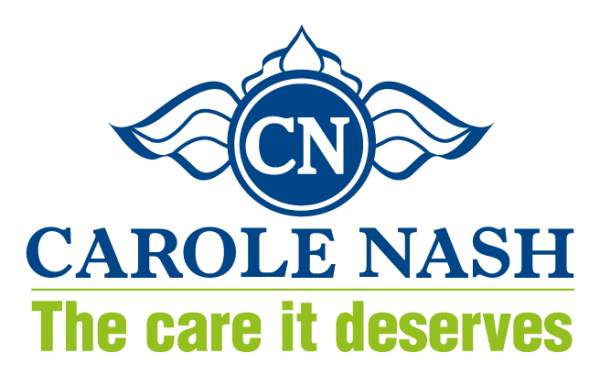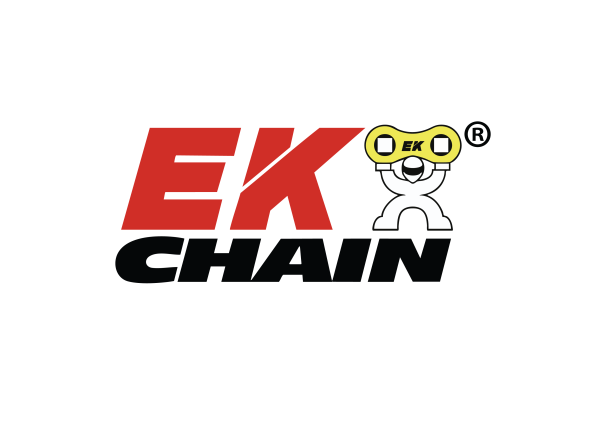HELL FOR LEATHER
RST is rightly proud of its safety record and its position at the sharp end in developing motorcycle clothing. That’s thanks in part to the special relationship the company has with the Isle of Man TT Races. Such is its uniquely demanding and challenging nature, the TT has long provided the perfect platform for anyone to show off their skills and technical knowhow, but, when it comes to the welfare of riders, the event’s safety partner is ready to play a more meaningful role.
Stuart Millington, Head of Brand and Product at RST, can hardly wait for TT 2022. Two years away from the Isle of Man and its world-famous event seems like an eternity for a man whose work takes so much inspiration. Where the TT lays down the gauntlet, Stu and his colleagues pick it up.
Having recently extended RST’s sponsorship for another five years, Stu considers the TT’s new Safety Management System (SMS) with the sort of enthusiasm young children have for Christmas. These are exciting times for a company like RST, one that has not just ‘bought into the TT’, but bought into the TT on a far more meaningful level.
However, the SMS is hardly the only change that Stu has encountered in the past 24 months. Covid-19 and Brexit have both presented new challenges, but the mention of the European Union brings us neatly to the start of RST’s next chapter with the TT.
It’s increasingly difficult to remember a time when we weren’t all so familiar with the world of PPE [Personal Protective Equipment] and it doesn’t sound like the most promising of opening gambits for an otherwise fascinating topic. However, even when starting with the rock ‘n’ roll world of European Directives, Stu’s knowledge and passion for his work cuts through the subject like Peter Hickman slicing his way to TT victory.
“All motorcycling clothing is now classed as PPE. It’s not just the parts that actively protect you, the whole garment is classed as PPE and as such needs to pass minimum standards. Within those standards, of course, are different levels of protection with ‘Triple-A’ (AAA) being the highest.
“The new PPE standards are there to ensure that if we, as a manufacturer, are making bold claims about safety, those claims are backed up by data and evidence obtained through testing. Obviously, if you buy an item without it being tested and certified, no one knows if that will actually protect you.”

“NO RIDER LINES UP ON GLENCRUTCHERY ROAD WITHOUT THINKING, THIS IS QUITE A DANGEROUS ACTIVITY."
CLARITY
So far, so good. But how does this affect the TT, and what benefit does it bring? Kept abreast of the recent root-and-branch review of the TT and the installation of the event’s new Safety Management System, Stu could see an immediate opportunity that arrived with the new Directive from Brussels.
“It doesn’t matter whether these garments are used on the racetrack or on the road, there’s no differentiation between the two in the eyes of the law. It was therefore important for the TT to reflect these changes in their own regulations and standards and align with the new PPE classification.
“It will ensure a higher level of protection for all competitors, of course, but there is another massive benefit that comes with the change, because the new minimum standards will bring real clarity for the TT’s scrutineers. Remember, a visual inspection is not the same as a laboratory test report. All leather looks like leather, but not all of it is suitable – some of it you certainly wouldn’t want to use to make a pair of gloves or riding boots.
“When we add a label to one of our products, it means it’s been tested and certified and all of our declarations have been published. For the scrutineers in 2022, they simply have to check for the labels to know that what they’re inspecting not only looks good, but is good.
“These standards are not restricted to the most expensive race suits either. We retail CE certified race suits for £400 and you can buy a AAA suit from your nearest dealer for less than £500. There is no financial barrier to safety, and that’s important.”

“WE CAN HELP MAKE THE RIDER FEEL MORE COMFORTABLE, THUS CONTRIBUTING TO THE OVERALL SAFETY OF THE EVENT.”
PROACTIVE
Whilst RST and the TT have arguably ‘reacted’ to these particular changes, both are actually fully immersed in their respective proactive approaches to safety. With the implementation of the Safety Management System, the TT’s organising team have set off on a never-ending journey of improvement, proactively seeking problems and identifying the best solutions.
RST also takes a proactive approach to rider safety, understanding that ‘passive safety’ – what you can do to help avoid an accident – is just as powerful as ‘active safety’ – what you can do in case of an accident. Continuously working to perfect that balance, Stu allows the same idea to guide his thinking on racing the TT Mountain Course.
“Understanding passive and active safety is key, and it’s important to achieve the correct balance of the two things. What we’re saying is that it’s not just during the crash or after the crash that counts – it’s before the crash too. The minimum standards still allow for design and development in other areas, notabley ergonomics. This is crucial because we can help make the rider feel more comfortable, thus contributing to the overall safety of the event.
“A lot of our design and development is done on the racetrack with seasoned racers like Ian Hutchinson. If we ask one of our riders, ‘How’s the suit?’ and they say, ‘Fine’, that’s perfect. If we receive no feedback at all, that’s perfect too – that means they haven’t thought about it, therefore it’s not uncomfortable in any way, nor been a distraction in any way. If a rider hasn’t thought about their helmet, gloves, boots or suit, then its ‘job done’ for those of us working in rider PPE and really thinking about passive safety.”

RACERS AND ENGINEERS, BEN AND TOM BIRCHALL, DON’T COMPROMISE WHEN IT COMES TO RIDER PPE.
BALANCE
Despite RST leading the discussion on the use of airbag suits at the TT, Stu is equally keen that passive safety is considered whenever the question of making them mandatory comes up. First, he wants to instill confidence in the product and only then will he feel ready to offer racers a choice, as he explains.
“First, we need real confidence that all manufacturers can bring an airbag suit to the TT that will only activate in the instance of an accident. That’s key, because the rigours of the Mountain Course are very different from any MotoGP track. Those circuits don’t have Ballaugh Bridge!
“RST is committed to collecting as much TT-specific data as possible using as many riders as possible. Even if they’re not actually using the airbag, our riders’ suits are equipped with the ‘brain’, which still records all of the data and information over all those miles – whether it’s connected to the airbag or not.
“Potentially we’re only a couple of years away from having a system that has been completely validated and proved safe and suitable for use on the Mountain Course, but the TT is such a unique event that perhaps riders will always have a choice. I don’t see airbag suits being mandated, particularly because of the uniqueness of the circuit.
“Remember, some of the top riders choose not to wear any body armour at all, never mind an airbag. They would rather be more comfortable on the bike, so again, it’s that balance of ‘passive safety’ and ‘active safety’. It’s an important point, because our products are also designed to help prevent an accident and not just help when an accident does occur.
“Rather than airbag suits ever being mandated, we should perhaps look to do everything in our power to instill real confidence in the technology and then allow the rider to choose. I think that would be a good direction to go in; that we first demonstrate our system is safe to use on the TT Course. Once we have all the data and evidence to prove the product – and there’s been no false deployment after many thousands of miles – the system could effectively be ‘TT approved’ and made available to competitors. That could easily be done with other manufacturers too.”

“IT IS OUR ROLE TO GIVE THE RIDERS THE BEST EQUIPMENT POSSIBLE FROM BOTH A PASSIVE AND ACTIVE SAFETY POINT OF VIEW.”
RISK
Stu takes a similarly pragmatic approach when he considers RST’s partnership with the TT. After all, few brands today would choose to be associated with a sporting event where a fatality is not unrealistic. His philosophy is one that has been heard before, but everything Stu says is delivered with real clarity and purpose – values you suspect run throughout the company and its products.
“We’re not unaware of the risks, just as any competitor is not unaware of the risks. No rider lines up on Glencrutchery road without thinking, ‘This is quite a dangerous activity’. So is skydiving. So is mountaineering. No one’s going to stop you climbing Mount Everest because it’s dangerous, but what you will do is take the best equipment with you to ensure you come back down again.
“That’s our role: to give the riders the best equipment possible from both a passive and active safety point of view. In doing that, each racer not only has the best chance of winning the race, but the best chance of staying safe too.
“We live in a very risk-adverse culture and a lot of brands – even in our world – probably see the TT as a risk too far; they wouldn’t want to be aligned with that level of danger. MotoGP, for one example, is seen as ‘safe’ in comparison, with its huge gravel traps and run-off areas. It’s actually still a dangerous sport, but the TT is a race held on public roads. These are roads that you and I can both ride on, with cars coming the other way, and tractors, and sheep.
“There’s an inherent risk in riding a motorcycle and we feel it’s our job to minimise that risk for everyone. What we learn at the TT goes ultimately into making our garments better and safer, with all motorcyclists receiving the benefit. Our products have effectively been developed – in part – by operating in that most challenging and demanding of environments.”

“IF WHAT WE DO MEANS PREVENTING JUST ONE SERIOUS INJURY IN THE NEXT 10 YEARS, THEN THAT MAKES IT WORTHWHILE.”
AUTHENTIC
Indeed, one of the things RST are most proud of is the fact that the V4.1 suits you see Conor Cummins and Ian Hutchinson wear for racing are identical to the V4.1 suits you can buy from your local dealer. Obviously, theirs are produced in custom team colours, but from a technical point of view they are made by the same team of skilled technicians to the same specification in the same factory; nothing is outsourced or made by anyone else.
That’s the sort of authenticity that makes RST a perfect partner for the TT – a special relationship that stretches back to 2013 with the inspired introduction of the Classic TT. However, when presented with an opportunity to ‘step up’ to the world-famous Isle of Man TT Races in 2015, Stu and his colleagues grabbed it with both gloves. An event like the TT, they knew, would gift the company extra purpose and meaning. Make no mistake: this was no cynical PR exercise, the staff at RST hold the fabled event dear to their hearts, just like any fan.
Now, with the instillation of the new Safety Management System, it is RST who are helping to bring purpose and meaning to the vital discussion around rider PPE. As motorcycling clothing continues to develop, the company is ready to contribute further, with Stu signing a new five-year deal with the race he truly puts on a pedestal.
“We are incredibly proud to be involved in the TT. It is amazing, special and unique. We believe it’s on the same level as Formula 1 and the 24 Hours of Le Mans. It should certainly be seen as the premiere motorcycle racing event in the world so it’s right to start elevating the event and lift the culture around it.
“We’re under no illusion it’s a dangerous event. While safeguarding everything that does make it so special, mitigating the overall risk – and striving to remove any unnecessary risk – is obviously the correct thing to do. We’re ready to help, and honoured to play a part in the Safety Management System. If what we do means preventing just one serious injury in the next 10 years, then that makes it worthwhile. That’s how we view it at RST.”












